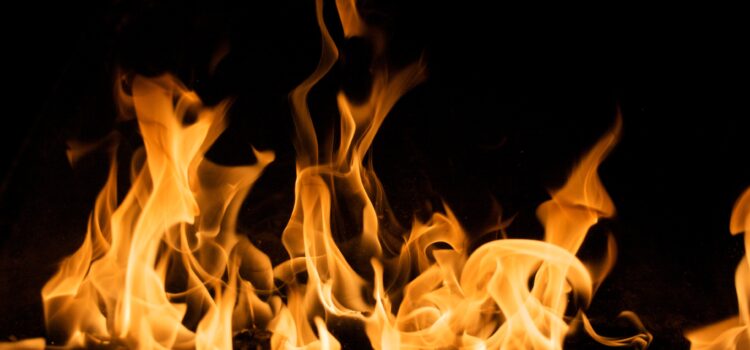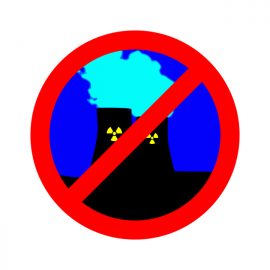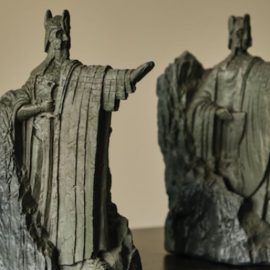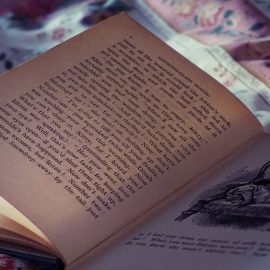

This article is an excerpt from the Shortform book guide to "Behind The Beautiful Forevers" by Katherine Boo. Shortform has the world's best summaries and analyses of books you should be reading.
Like this article? Sign up for a free trial here .
Who was Fatima in Behind the Beautiful Forevers? What was Fatima’s role in the story and why did Fatima set herself on fire?
Fatima in Behind the Beautiful Forevers was a mentally unstable woman who was mocked by the residents of Annawadi because of her deformed leg. In the book, Fatima set herself on fire to get back at the Husain family because they ignored her complaints about noise caused by the family’s renovations.
Read on to discover how the actions of Fatima in Behind the Beautiful Forevers altered the lives of the Husain family.
Who is Fatima in Behind the Beautiful Forevers
Fatima in Behind the Beautiful Forevers was the mother of the family next door to the Husains. Abdul and others called her One Leg because she was born with one of her legs tapered below the knee. People made fun of her for the amount of makeup and perfume she wore and for her many extramarital lovers.
As a child, Fatima’s family had kept her at home and didn’t send her to school because of her disability. As an adult, she looked for affection where she could find it, maintaining a revolving door for lovers each day while her daughters attended school and her husband was at work. Fatima in Behind the Beautiful Forevers was also known for her temper, beating her children or hitting neighbors with one of her metal crutches. Neighbors thought her rage was animalistic, but Fatima disagreed—she was just as human as anyone else, yet because of her disability, she was treated as subhuman.
One of Fatima’s young children, a two-year-old girl, caught tuberculosis, and Fatima was terrified she would get it too. Shortly after her daughter’s tuberculosis diagnosis, the child drowned in a bucket. Fatima claimed it was an accident, saying she’d been at the public toilet at the time. Zehrunisa wanted to believe it had been an accident, but since their families shared a wall, she knew that Fatima had been home at the time. Also, the hut was very small, so it was unlikely Fatima didn’t know the girl was in trouble.
The police came to investigate, but they quickly ruled it an accident. Young girls died in the slums all the time. Many parents were extremely wary of illness or injury in their children, fearful that treatment would impoverish them even further. Sickly children of both sexes were often killed. And the phenomenon wasn’t limited to lower-classes—wealthy parents might end a pregnancy of a girl once they found out the sex via sonogram, but slum-dwellers didn’t have access to this technology.
In Annawadi, the Husains’ Muslim community consisted of a man who owned a brothel and Fatima’s family. Though Zehrunisa and Fatima were friends, they clashed frequently, too. On the one hand, Zehrunisa believed that the Muslim families in Annawadi needed to support one another’s religious practices, celebrating holidays together, like Eid. On the other, she disliked how much Fatima beat her children, and she often broke up fights between Fatima and Fatima’s husband.
The Husains’ Conflict With Fatima
Abdul’s family soon began work on the renovations Zehrunisa wanted for their home. In the construction process, they upset the Behind the Beautiful Forevers’ Fatima, their next-door neighbor. How Fatima chose to retaliate ultimately drastically disrupted the life of the Husain family.
Hut Renovations
To make their hut more liveable, Zehrunisa and Karam planned to install Italian tiles like the ones advertised on the Beautiful Forever poster, a new shelf near her cooking area, and a small window to let out the cooking smoke.
Despite the constant threat of the authorities coming to raze the slum, no one thought there was anything wrong with the family making renovations to their hut. They knew that whenever the razing happened, the government planned to relocate families who had lived in the slum since 2000 to apartments, and they figured that families with more established huts stood a better chance of getting accepted into this program.
Before beginning the work, the family moved out trash and recyclables they were storing in their house, as well as a television they had bought on a payment plan and some other goods. Some of the children guarded the piles while the other children did the work.
Abdul worried that his family’s renovation would make their Hindu neighbors resentful that his Muslim family earned more than they did. He generally tried not to attract attention to himself. Indeed, seeing the piles of things outside, some of Annawadi’s residents began to realize that the family was wealthier than other families in the slum.
Fatima’s Anger
The renovation work involved many noisy tasks. To prepare the hut for the ceramic tiles Zehrunisa wanted, some family members were working to break up the stone floor and level it. Abdul was working to install a cooking surface, but to do so, he needed to cut into the wall that separated their hut from that of Fatima, the one-legged neighbor. Fatima periodically called out from her hut to complain about how loud the work was. She had complained the last three times the Husains had done work on their hut. Each time Fatima called out complaining, Zehrunisa would patiently call back, explaining the work they were doing and that it’d be noisy.
As Abdul was trying to install the cooking surface, he accidentally bumped the wall, knocking mortar dust into a pot of rice Fatima was cooking. Fatima was upset and went outside to confront the Husains. Zehrunisa met her outside and they began shoving each other. People gathered to watch as the women hurled insults at each other. Fatima demanded they stop doing the work on the wall or Zehrunisa’s family would pay for bothering her, but Zehrunisa contended the Husains had built the shared wall and had a right to do work on their own home. She also said that if they had waited for Fatima and her family to build a wall, both of their families would still be seeing each other naked. Abdul broke up the argument and took his mother by the neck back into the Husains’ hut.
Fatima went to the police to file a complaint, saying Zehrunisa had beaten her, but the police largely dismissed the incident as too minor a squabble for them to deal with. Zehrunisa went to the station later to tell her side of the story, and the police officers asked for bribes—technically, the Husains didn’t have a business license for their trash operation, but the police let them keep working in exchange for periodic bribes. However, Zehrunisa was several months behind on payments. So, Fatima was sent home and Zehrunisa stayed to deal with the police.
Asha, the aspiring slumlord, felt obligated to try to resolve the dispute between the two women. If she didn’t help, her reputation as a mediator would be questioned and the Corporator might replace her with someone more capable of managing people’s affairs, and she’d no longer be able to garner support for her political party. Plus, not being involved in others’ affairs meant not earning a cut of the money people paid to resolve problems.
Asha showed up at the police station and suggested that Zehrunisa pay her 1,000 rupees, some of which she’d give to Fatima to quiet her complaints about the hut renovation. Zehrunisa refused, saying she’d work it out with Fatima’s husband, whom she got along much better with. Just as Asha distrusted the Husains for being Muslim, Zehrunisa distrusted Asha for being anti-Muslim.
In Asha’s opinion, not settling the dispute was unwise because by not paying some money to Fatima now, Zehrunisa would exacerbate Fatima’s discontent and make her do something even more desperate.
Tensions Escalate
Meanwhile, while Zehrunisa was at the police station, Kehkashan, her eldest daughter, decided to confront Fatima outside her hut. She was frustrated with Fatima for complaining to the police, which had led to her mother getting harassed for money. Normally, Kehkashan helped resolve fights, she didn’t start them. But now, she threatened to tear Fatima’s other leg off. Fatima retorted that Kehkashan had prostituted herself. (In fact, Kehkashan had recently moved back to her family’s hut when her husband refused to be intimate with her and had affairs.)
Hearing the accusation against his daughter, Karam came out of the Husains’ hut. Kehkashan was more concerned that Zehrunisa was still being held at the police station. Karam sent his son, Mirchi, to check on her. Then, he told Fatima they planned to finish the renovations and would try to avoid each other after that.
Karam retreated into his hut. At that point, after days of work, they had made a lot of progress. Abdul had finished installing the cooking shelf and was picking up pieces of brick that had fallen down. The floor was mostly leveled and cement had been laid. But there was still a lot of disruption: Karam still hadn’t bought the tiles that Zehrunisa wanted, the shouting between the families had scared the younger children, and the family that was supposed to protect the Husains’ television—the brothel owner’s family—had accidentally broken it.
With so much in disarray, Karam finally lost his temper and stormed over to Fatima’s hut. Since Fatima had lied about Zehrunisa beating her, Karam wanted to show her what a real beating felt like, threatening to have Abdul beat her. Though he usually obeyed his father, Abdul didn’t want to hit a disabled woman. Kehkashan intervened and calmed her father down, but as she led him away, he told Fatima that their family should pay the Husains for half of what it cost them to build the shared wall in the first place. Fatima retorted that the Husains would need the money for their funerals because she would get back at them.
Fatima’s Burning and Hospital Stay
Fatima in Behind the Beautiful Forevers was mentally unstable, and she wanted a way to get back at the Husains for their threats and the renovations. She barricaded herself in her house, loud music playing. When her 8-year-old daughter, Noori, came home from school and couldn’t get inside, she called for assistance to see inside. Fatima’s neighbor and friend, Cynthia, propped Noori up so she could see through a hole near the roof. Noori watched as Fatima doused herself with kerosene, and lit herself on fire. Some of her neighbors had to break down her door to save her. When they got inside, they saw that the flames were mostly out because Fatima had used a water container to put them out, but she was in terrible pain. One neighbor thought that perhaps Fatima had only wanted to burn herself a little bit and instead had let the flames get out of control. Fatima said she had done it because of the Husains.
Fatima was taken to Cooper’s Hospital, which had a reputation for patients dying in their care. Doctors were discouraged from touching patients and the hospital didn’t provide food. Patients’ families had to pay for their own medicine and fill prescriptions at pharmacies outside of the hospital. A burn cream that Fatima needed cost so much money that her husband couldn’t afford to also buy bottled water for her to stay hydrated.
From her hospital bed, Fatima told police that Abdul, Karam, and Kehkashan had burned her.
While Fatima was in the hospital, her friend Cynthia, who also had a grudge against the Husains, visited her. Cynthia’s family’s trash picking business had suffered when that of the Husains became successful, and Cynthia had previously suggested Fatima retaliate.
Asha also visited Fatima in the hospital. She wanted Fatima to rescind her accusation against the Husains. In exchange, the Husains would pay for Fatima to get better treatment at a private hospital. Fatima thought Asha only wanted her to do this so she could take a cut of the money, and she refused.
Meanwhile, the police knew Fatima had set herself on fire from having talked to Noori, the daughter who witnessed it. However, they hoped to use the accusations against the Husains to extract money from them. They sent a government worker—who was also interested in extracting money from the Husains—to reframe Fatima’s story. In India, it’s a serious crime to commit suicide, so they sought to make it look as though Fatima had been driven to burn herself by the Husains. The government worker reported Kehkashan and Karam’s verbal threats against Fatima, and she contended that Abdul had beaten Fatima, which led Fatima to burn herself.Behind the Beautiful Forevers’ Fatima soon died of her burns. To avoid blame, the hospital said the cause of death was an infection resulting from burns over 95 percent of her body rather than the true figure, 35 percent. Zehrunisa and Kehkashan helped prepare Fatima’s body for burial because it’s traditional for Muslim women to prepare other women for burial. Despite the incident, their families were friends and tried to practice their faith together.

———End of Preview———
Like what you just read? Read the rest of the world's best book summary and analysis of Katherine Boo's "Behind The Beautiful Forevers" at Shortform .
Here's what you'll find in our full Behind The Beautiful Forevers summary :
- A nonfiction account of the lives of residents of in one Mumbai slum
- How the globalized world affects many people in India
- A story of poverty, exploitation, and the struggle to survive






